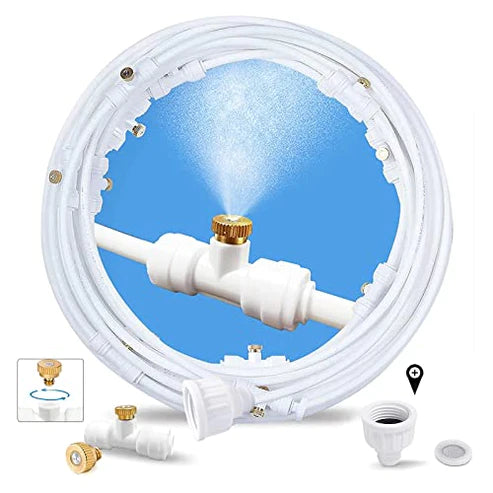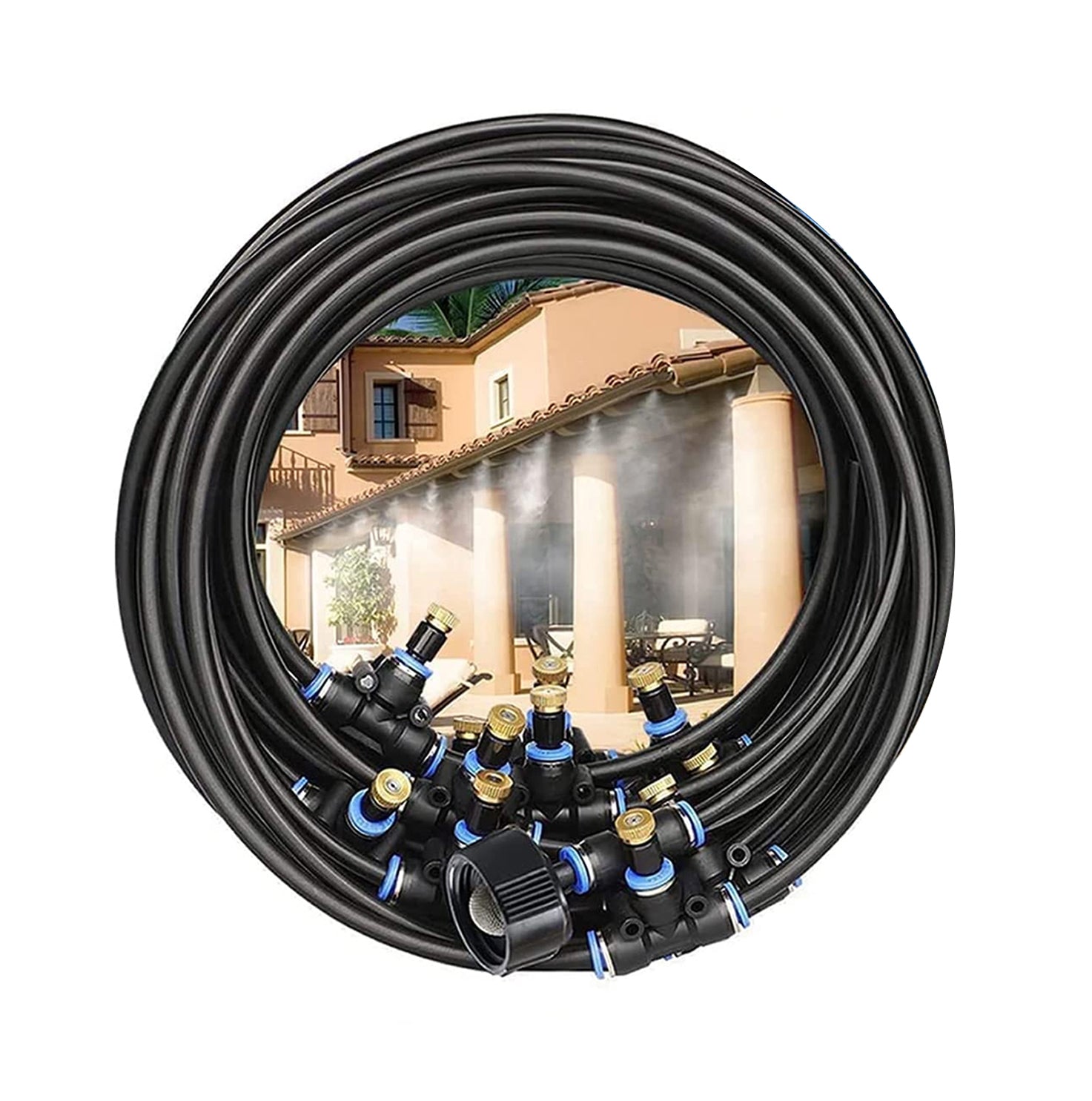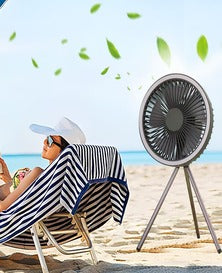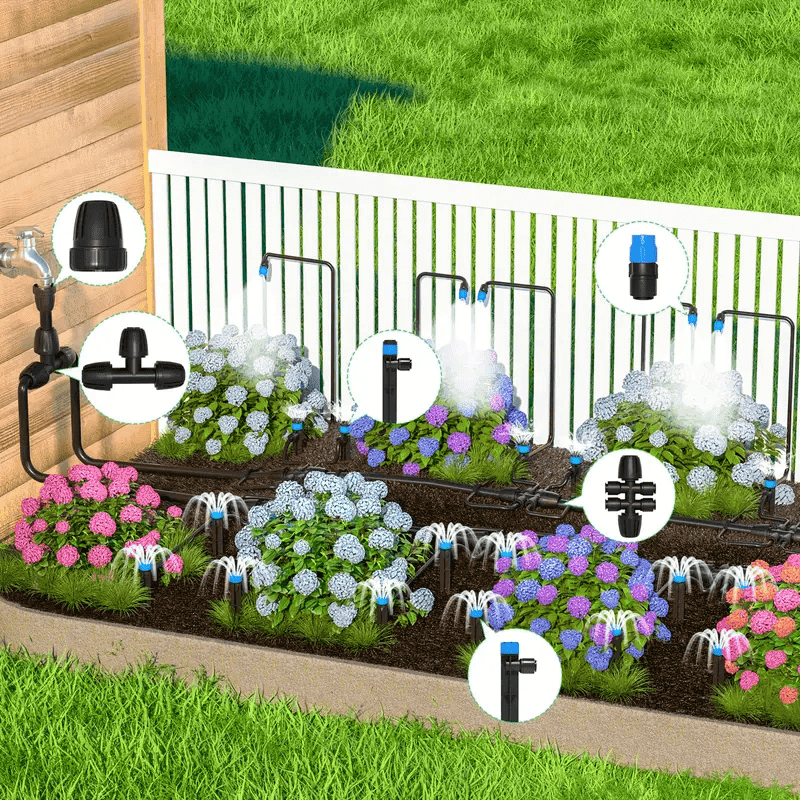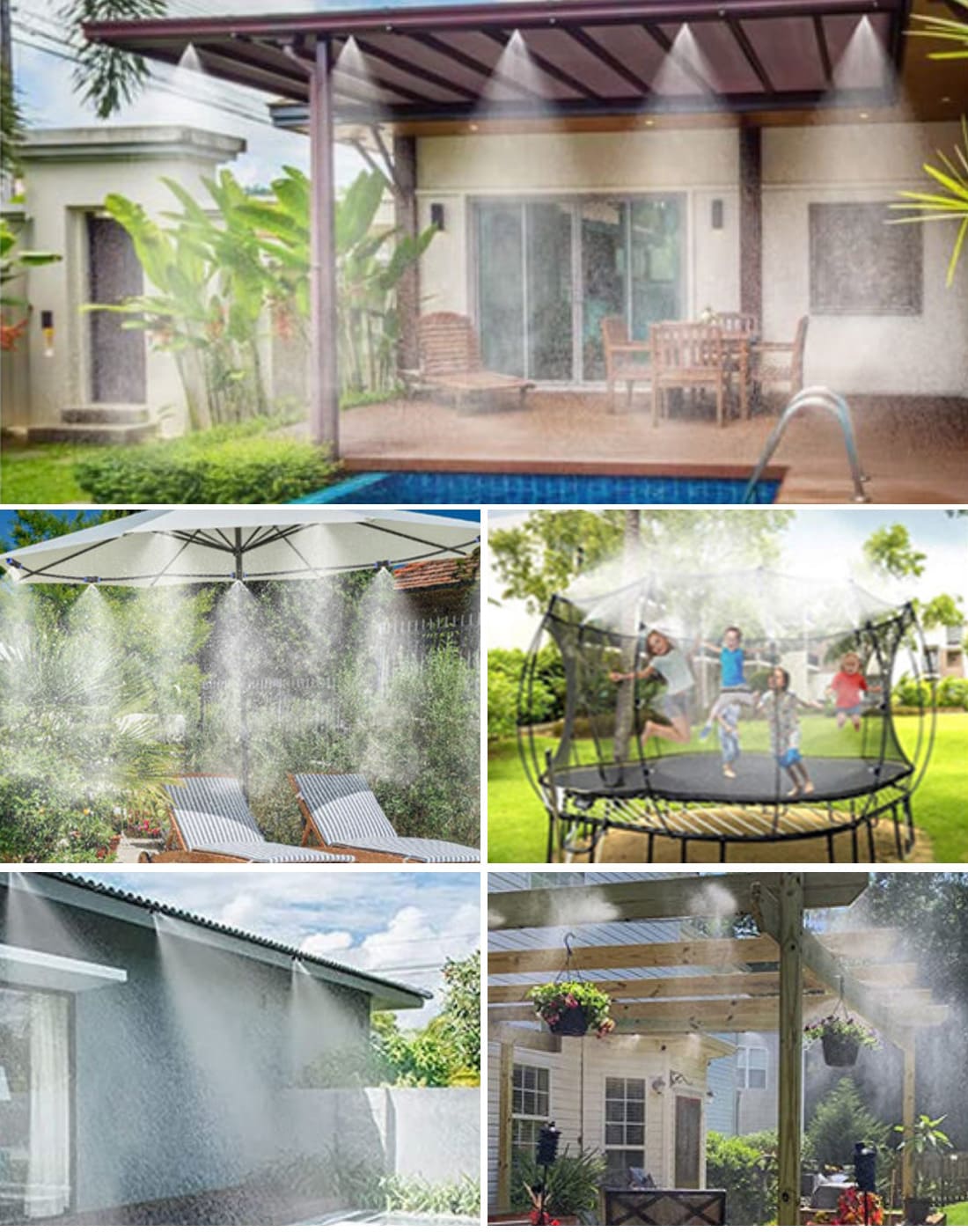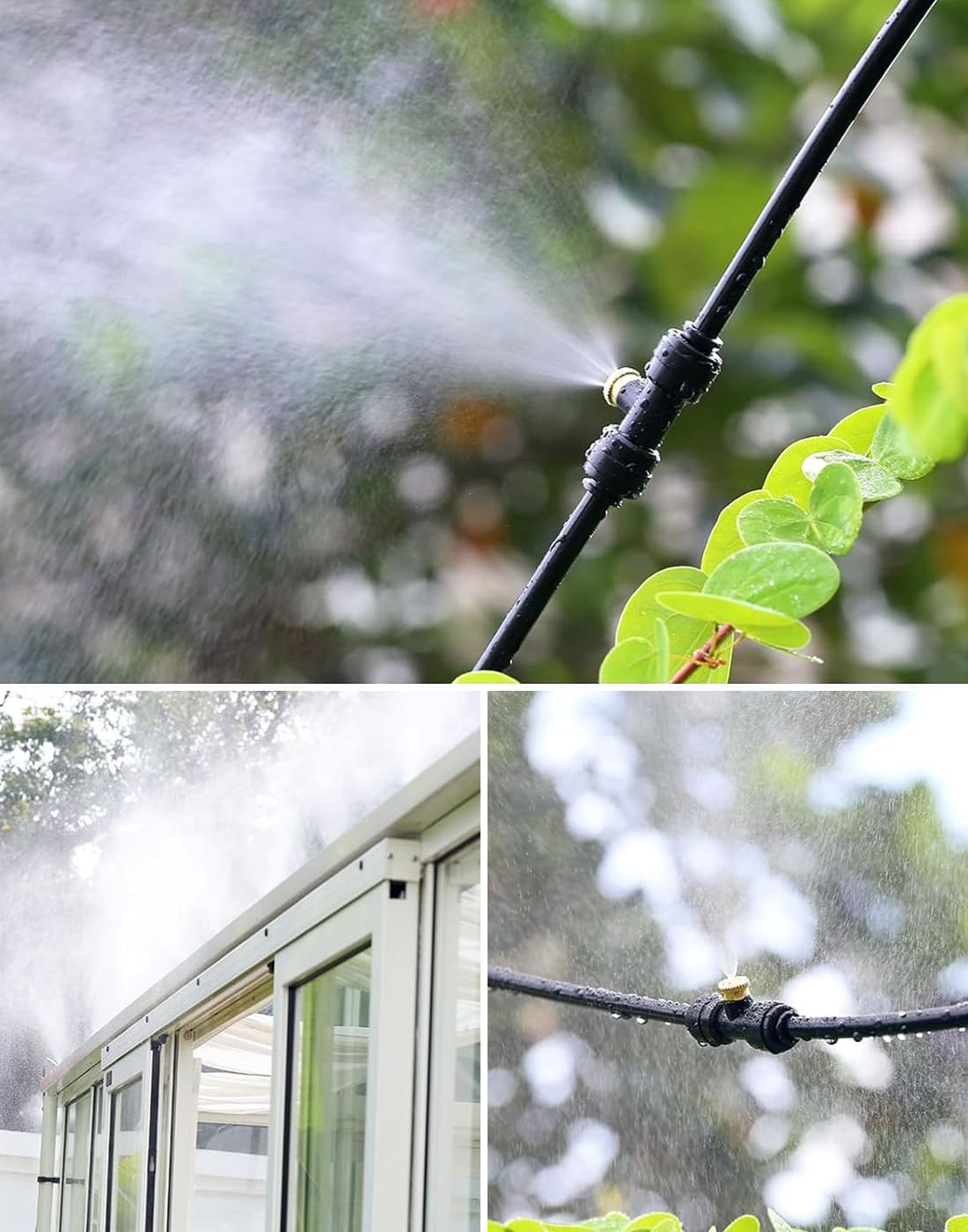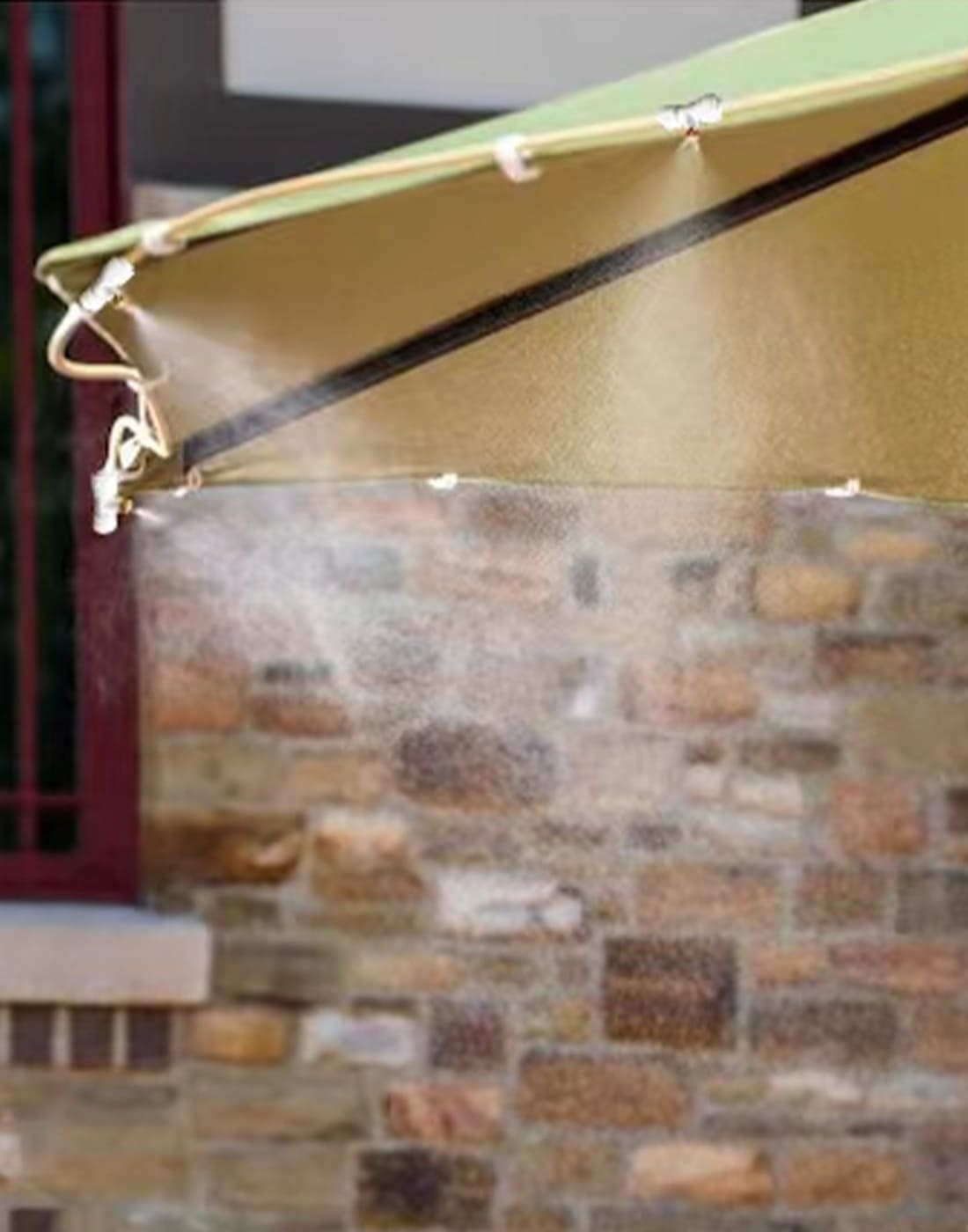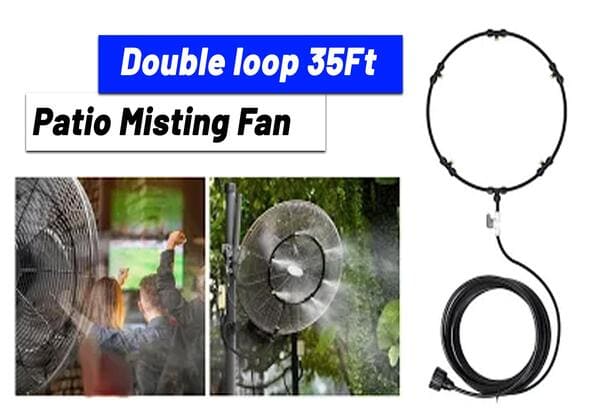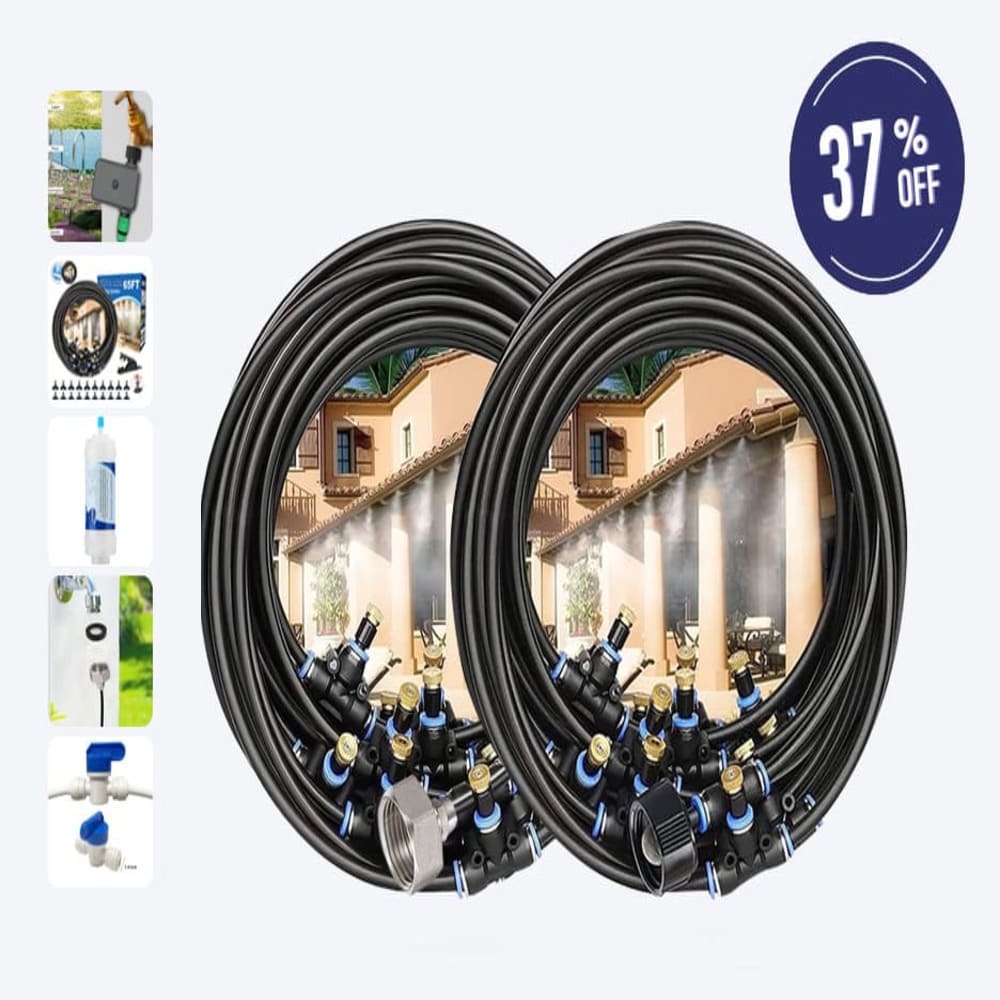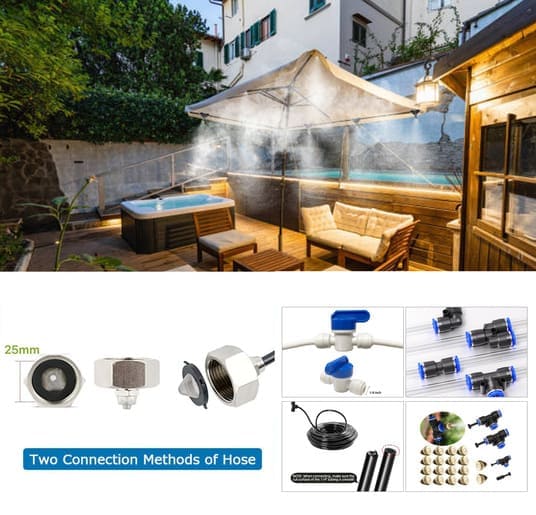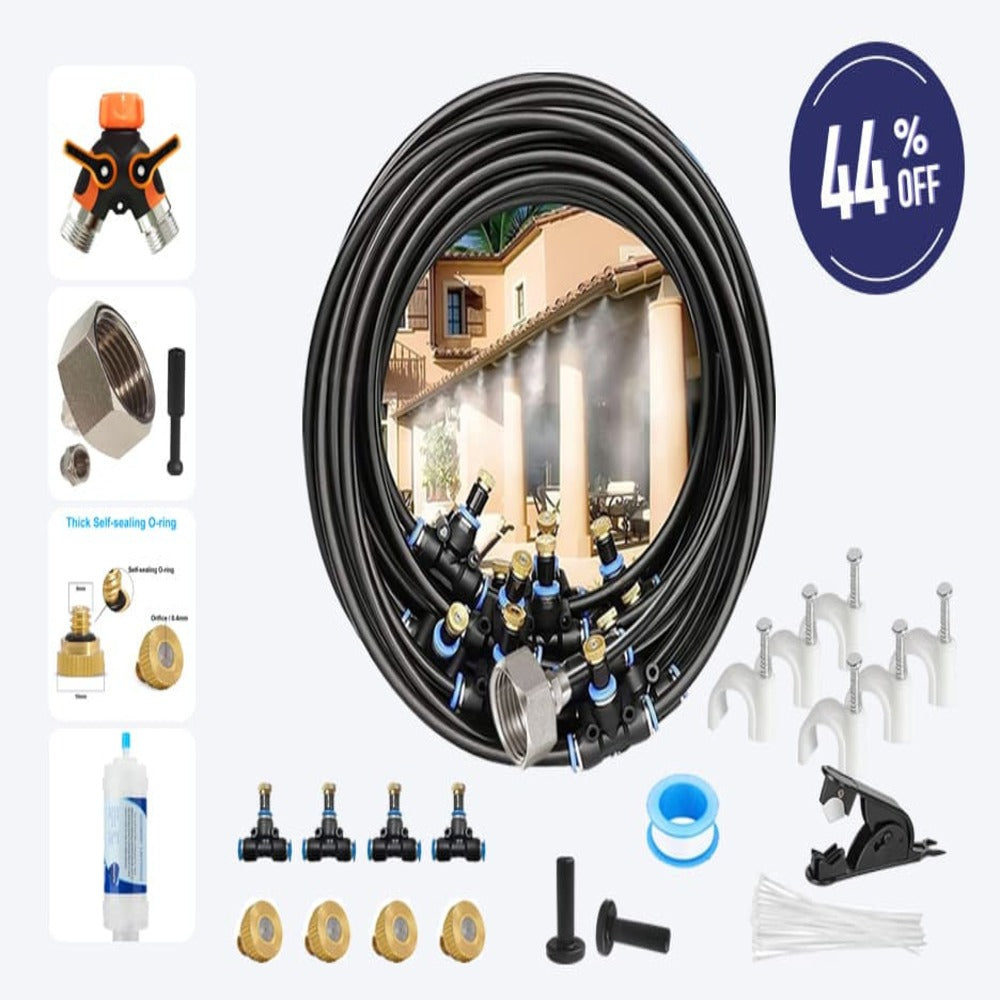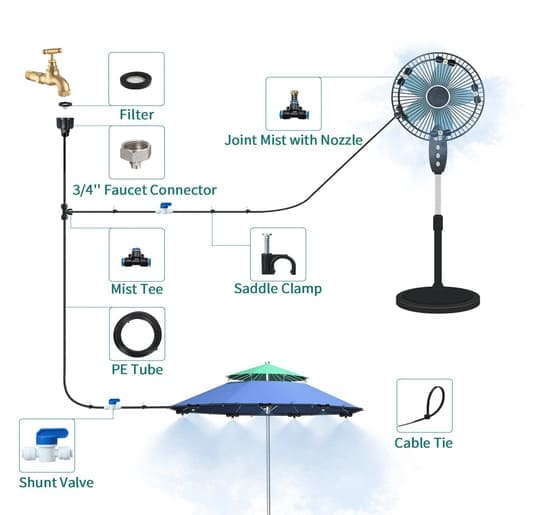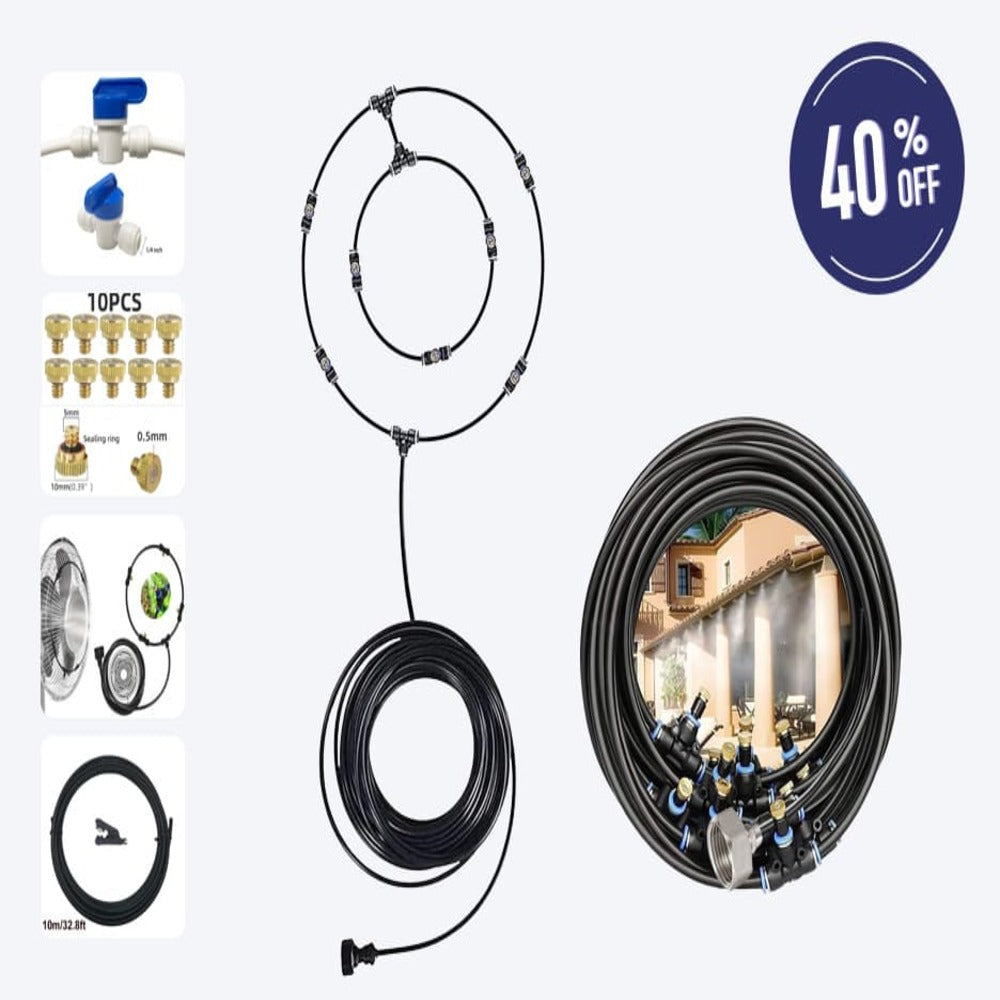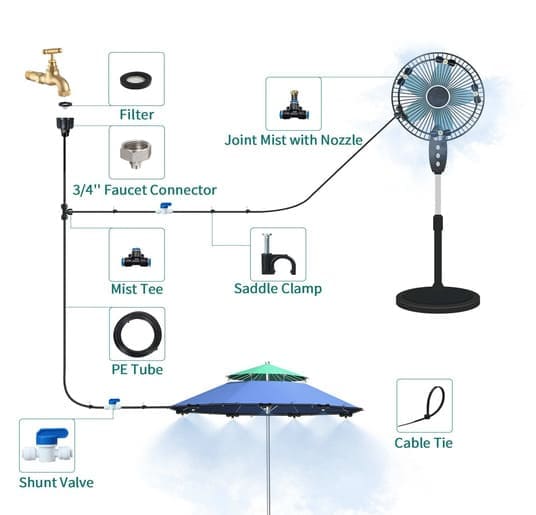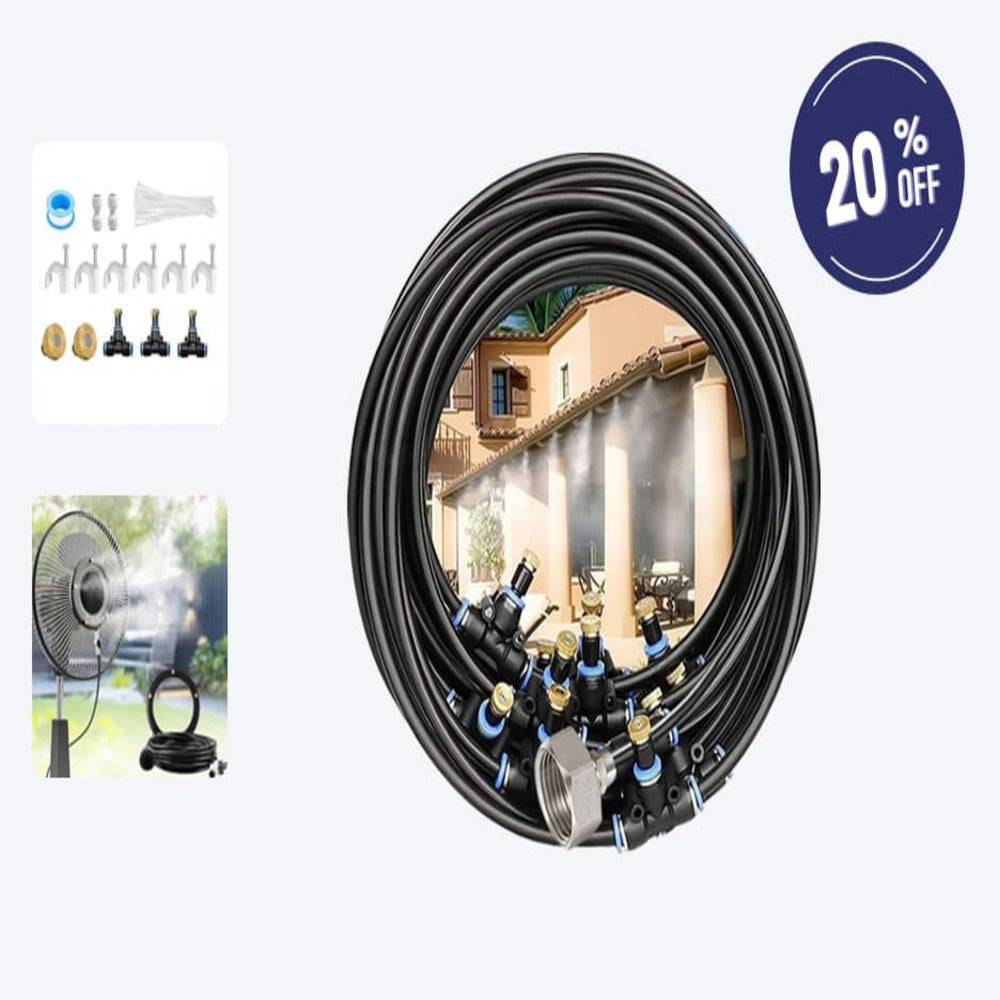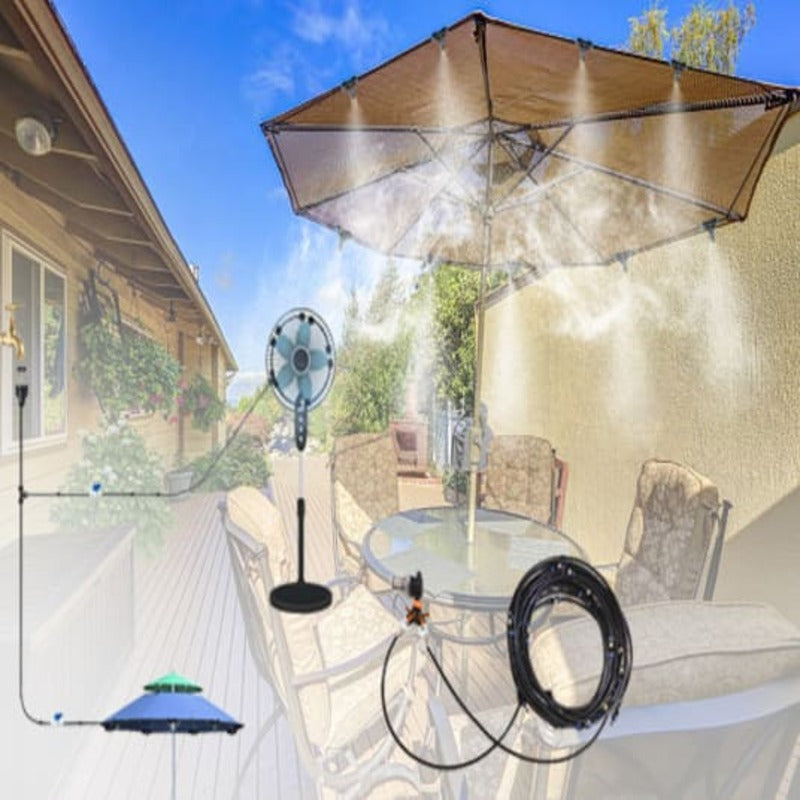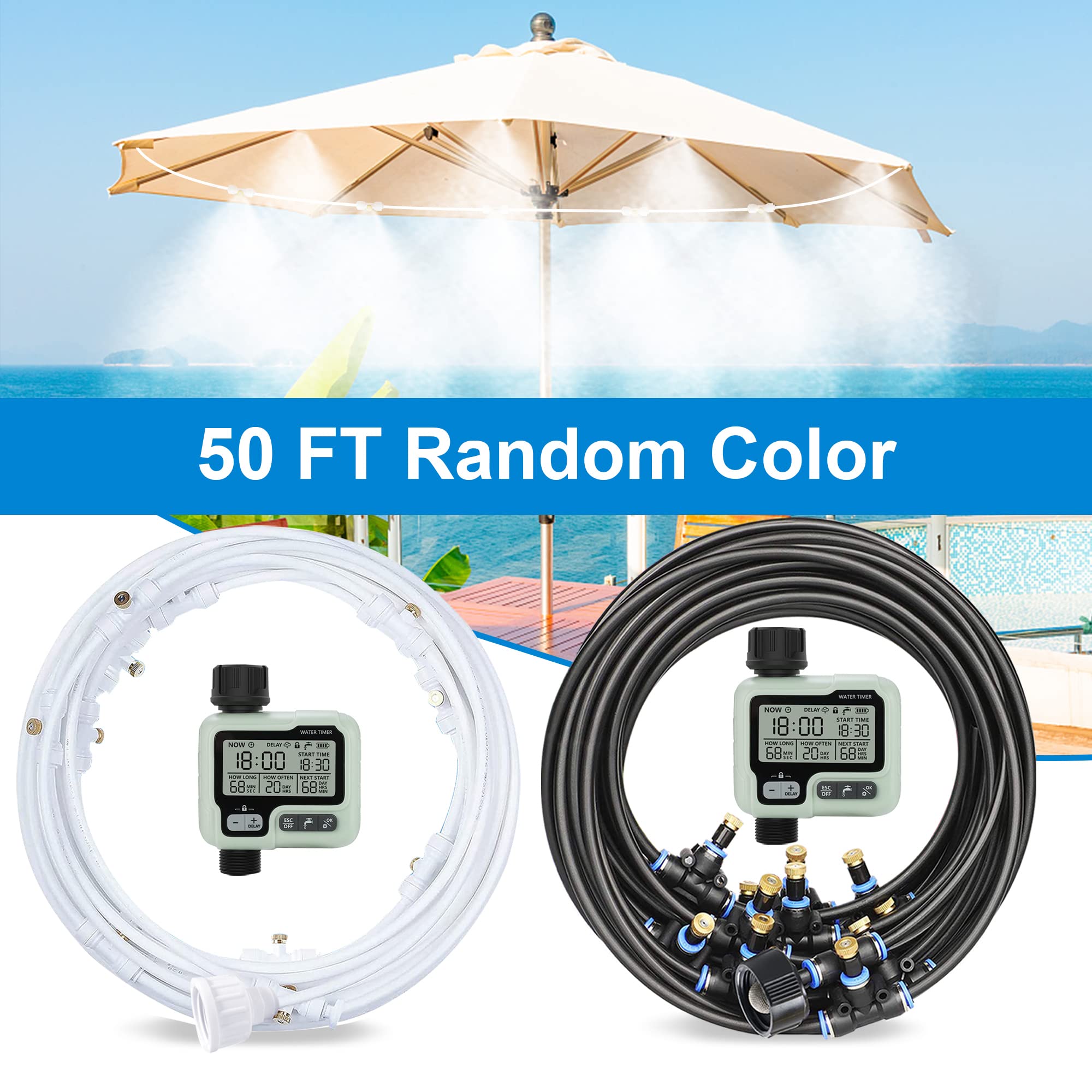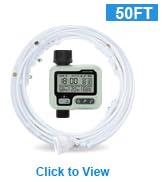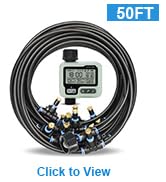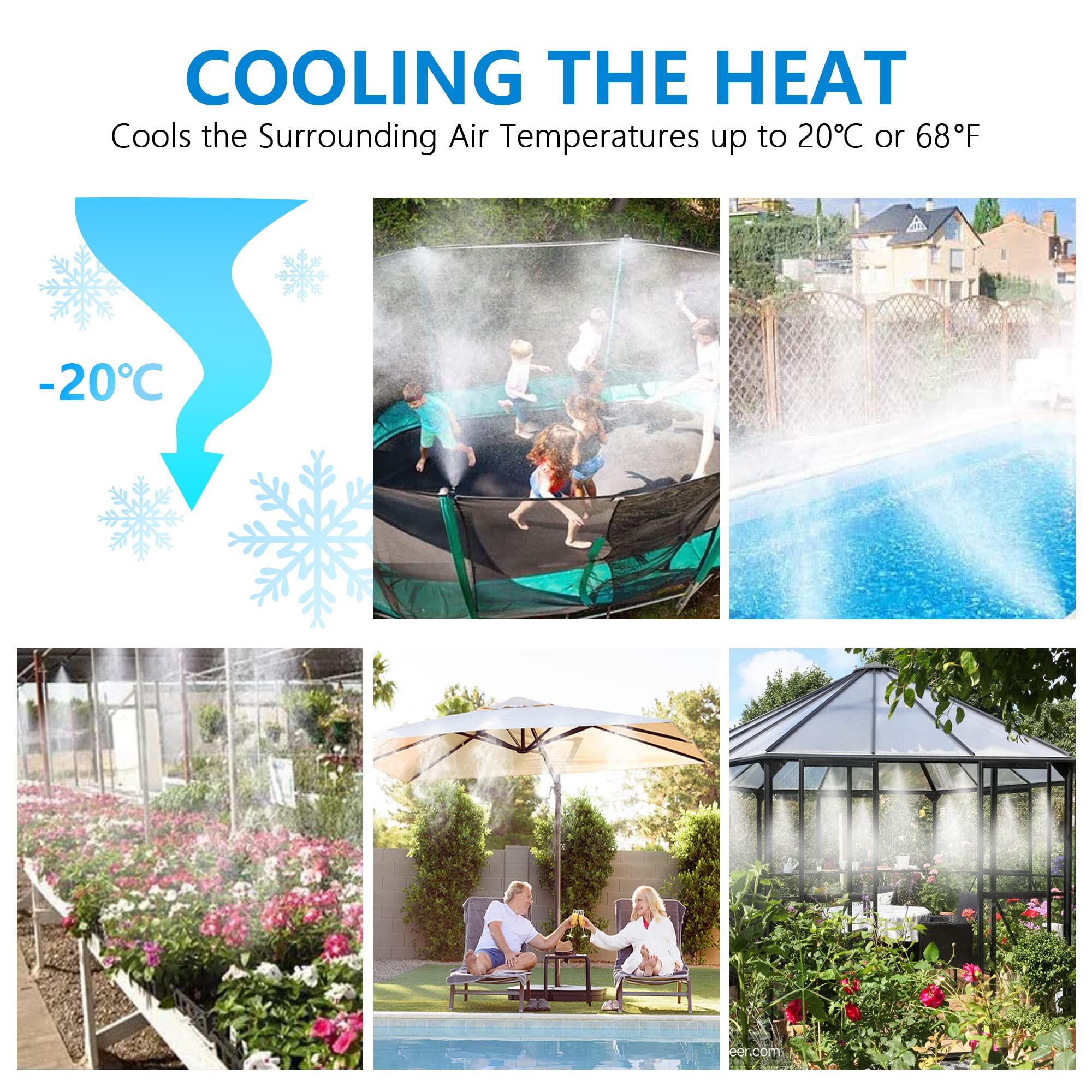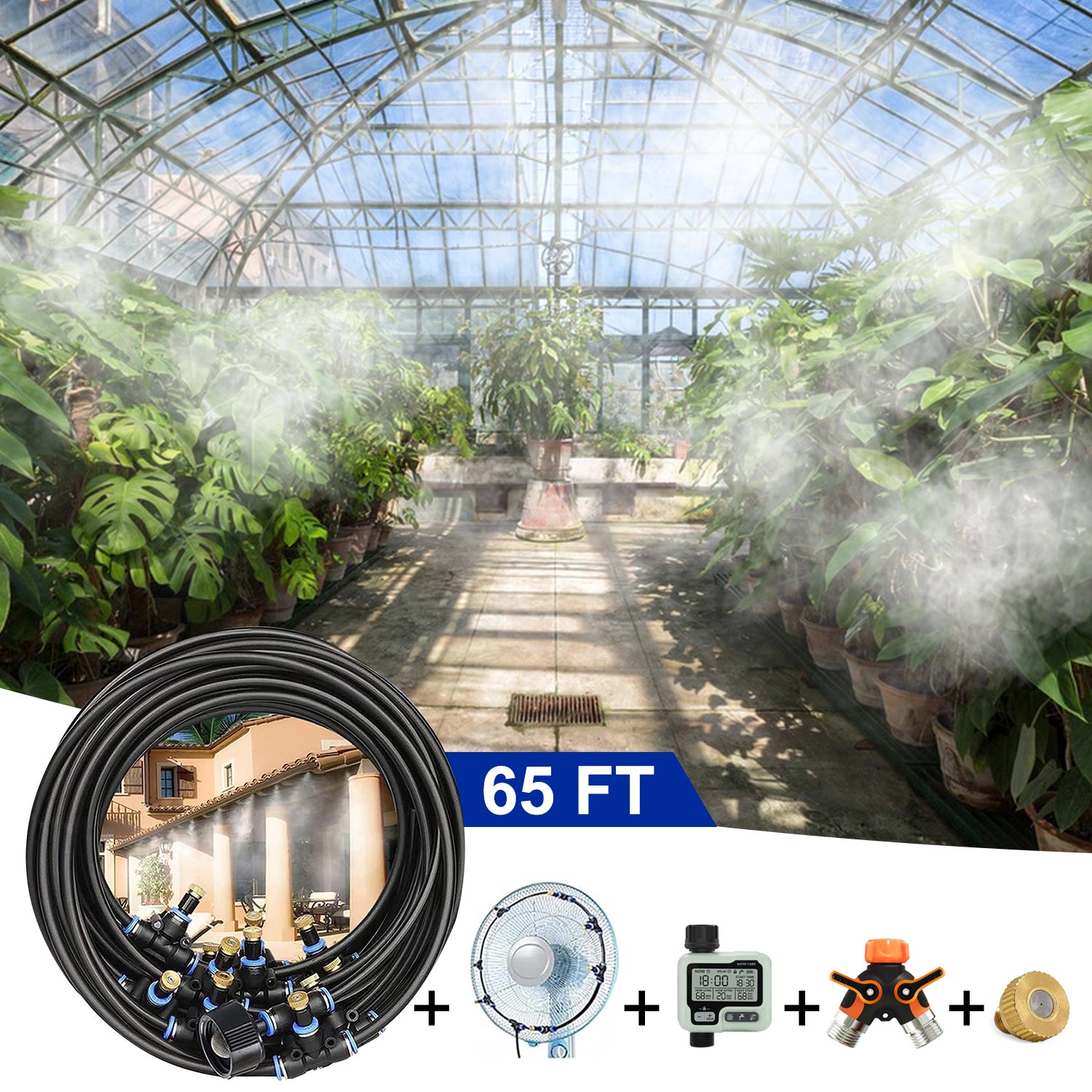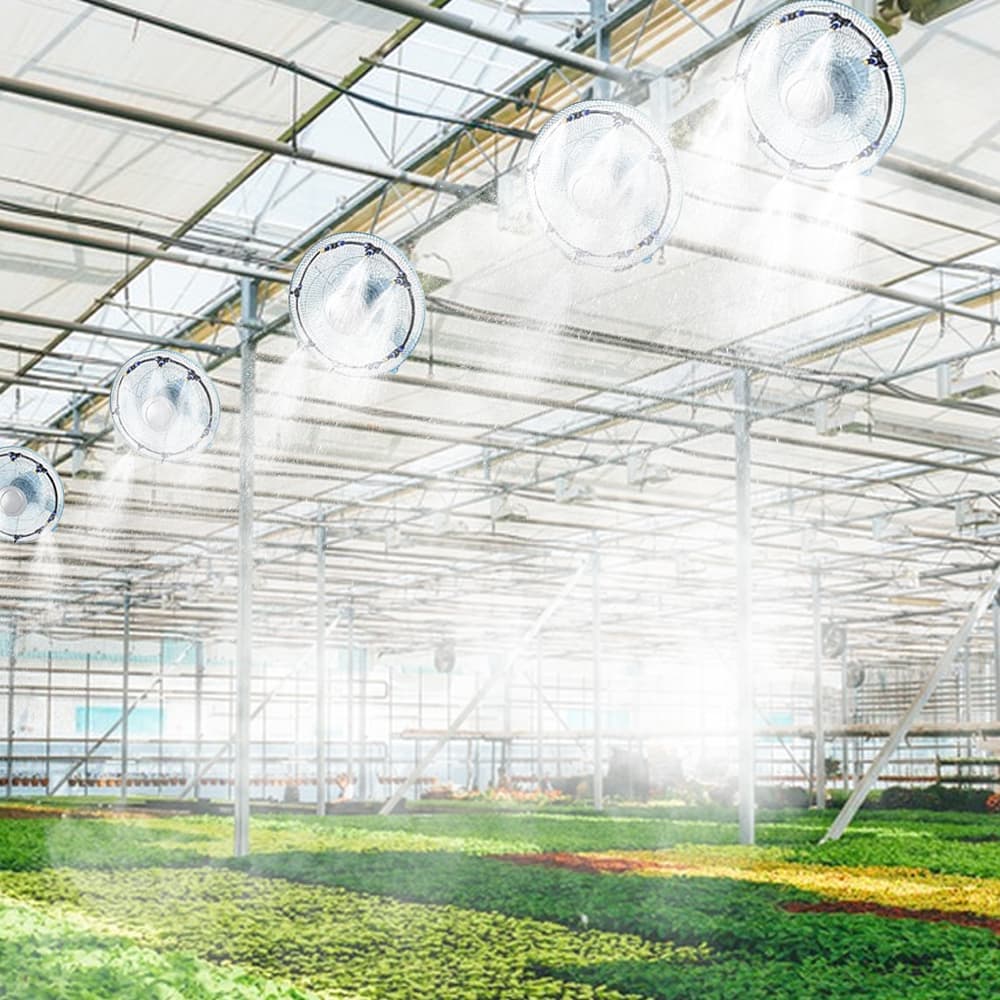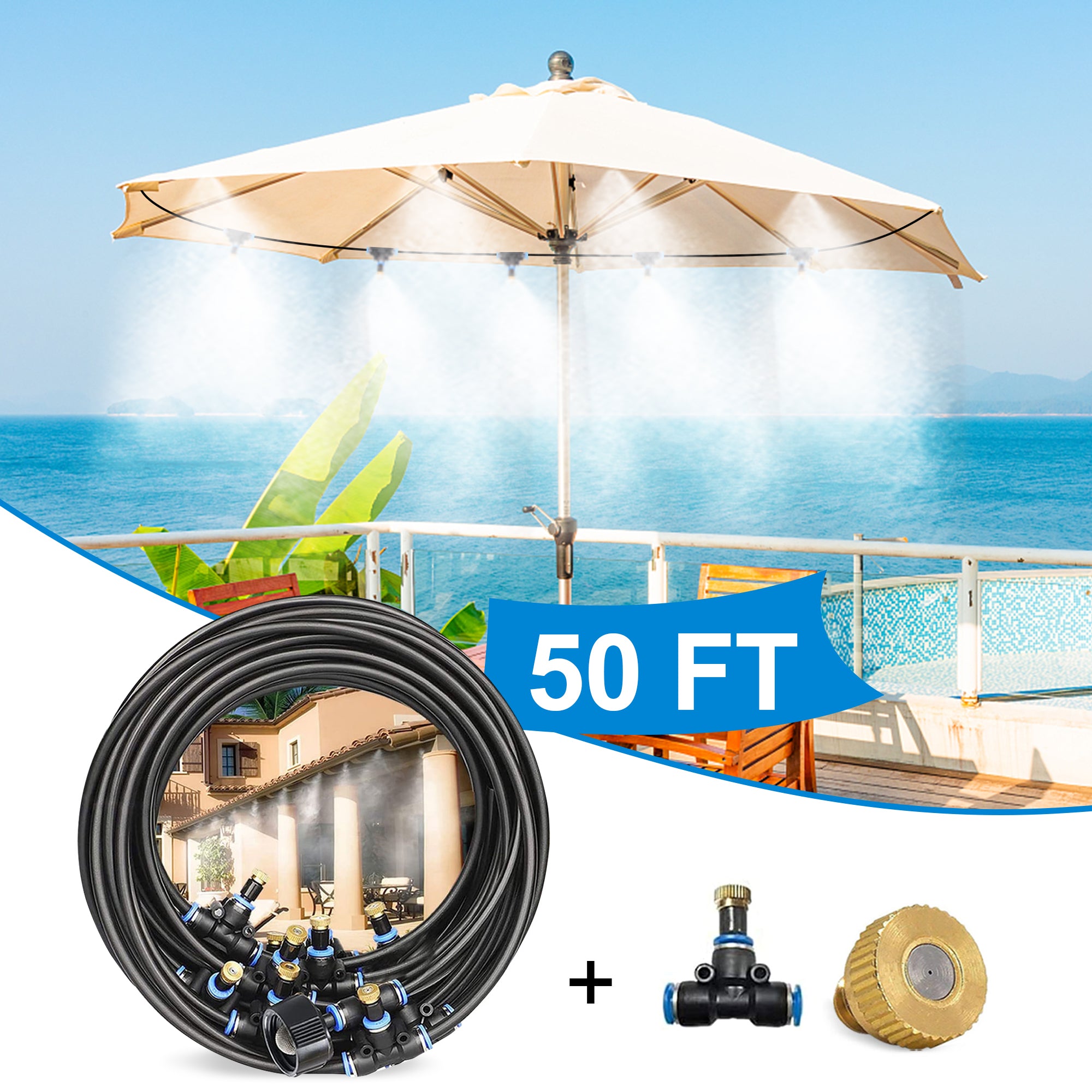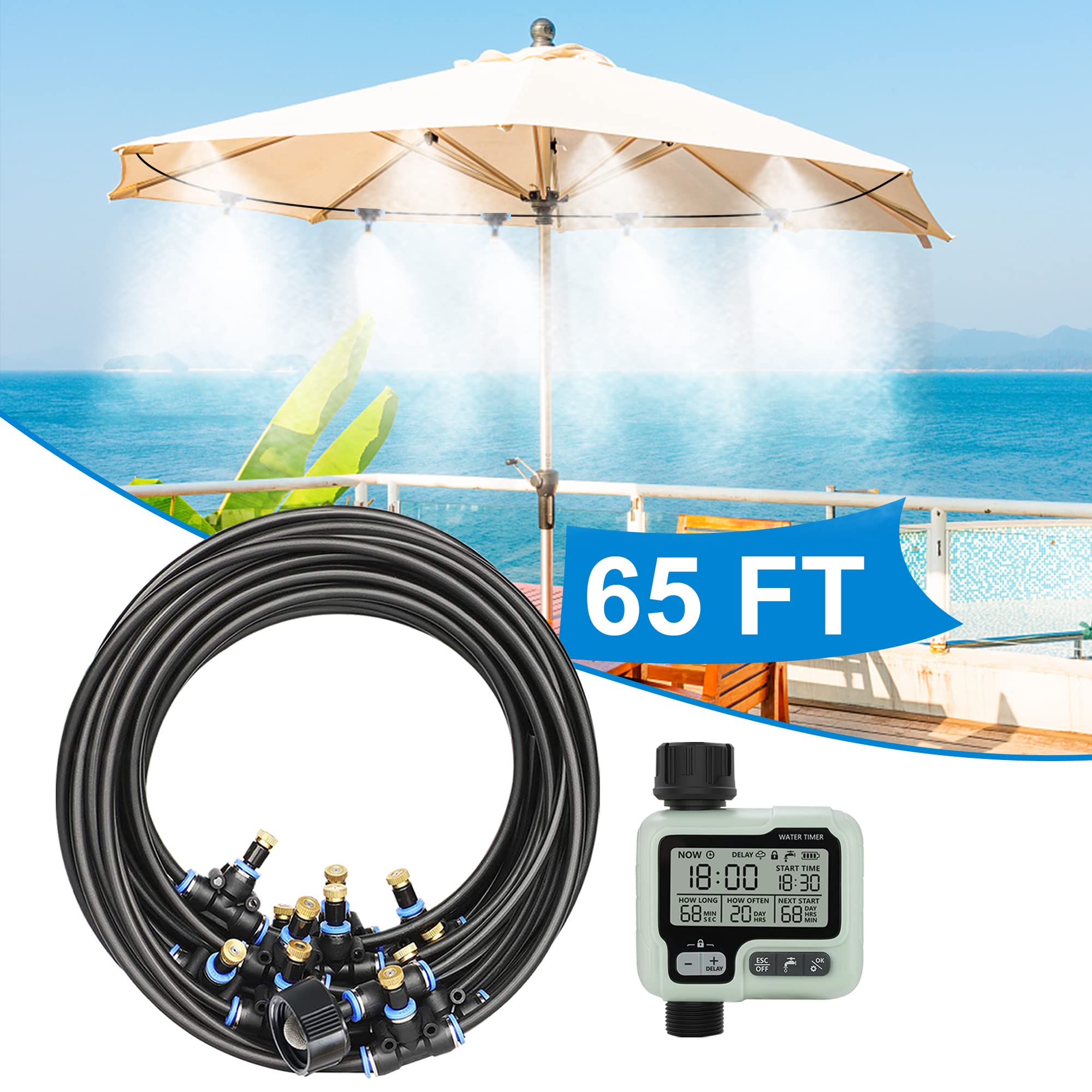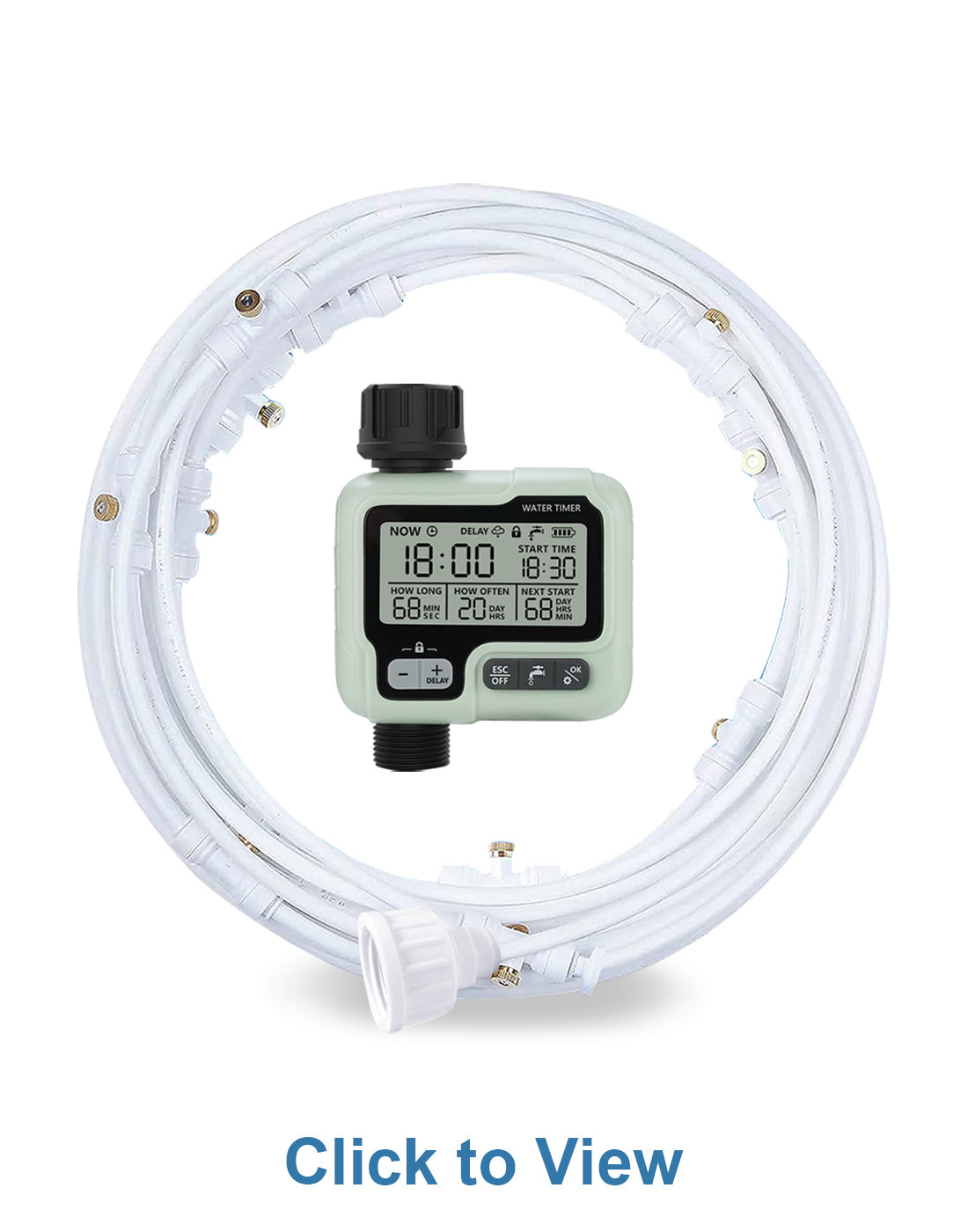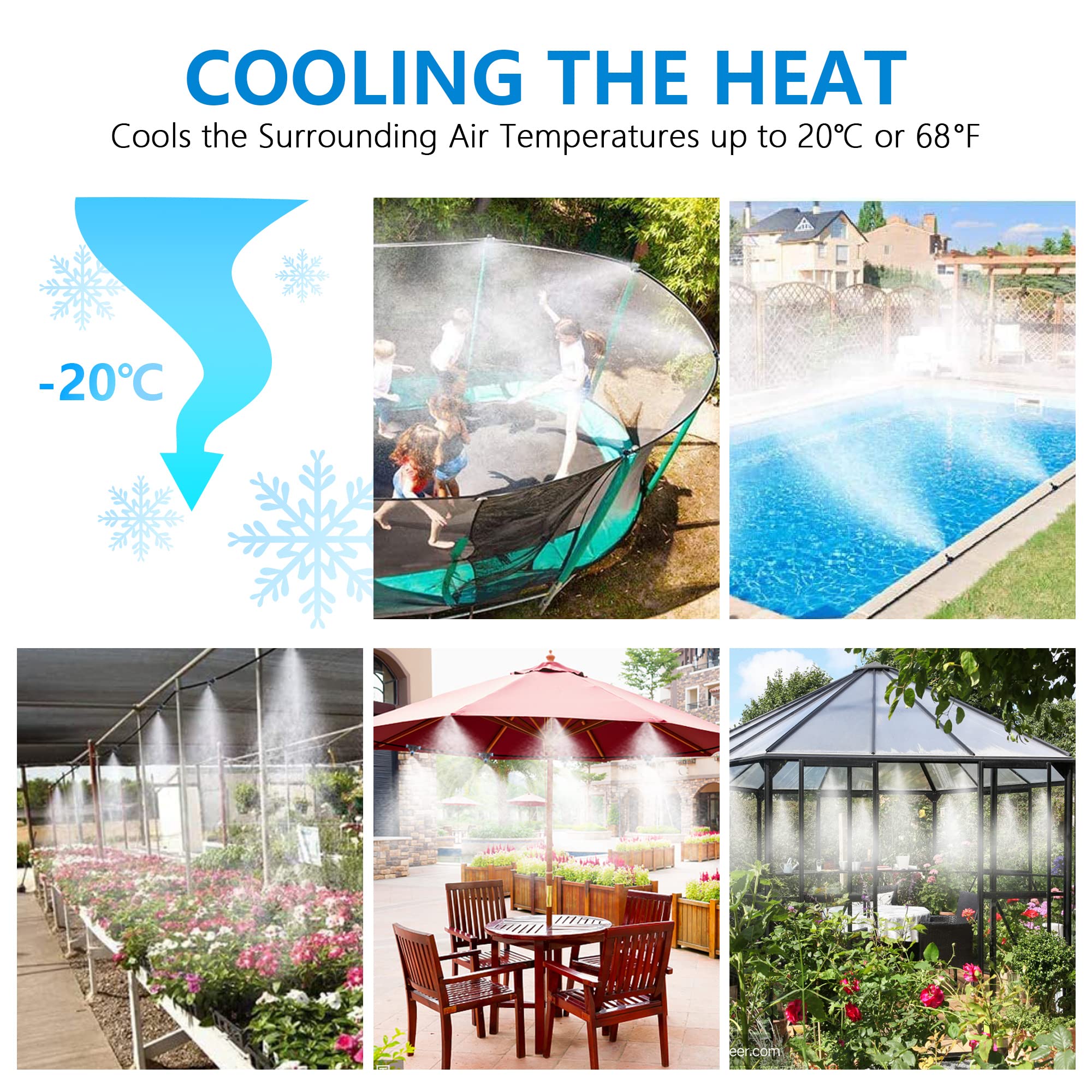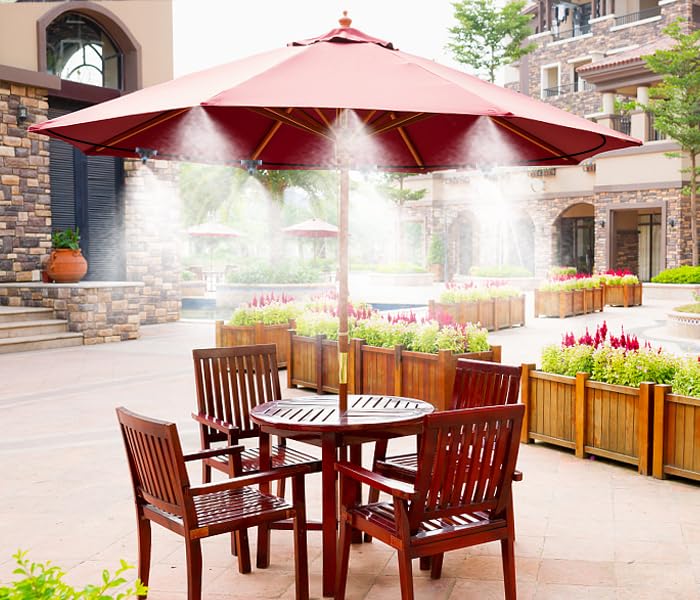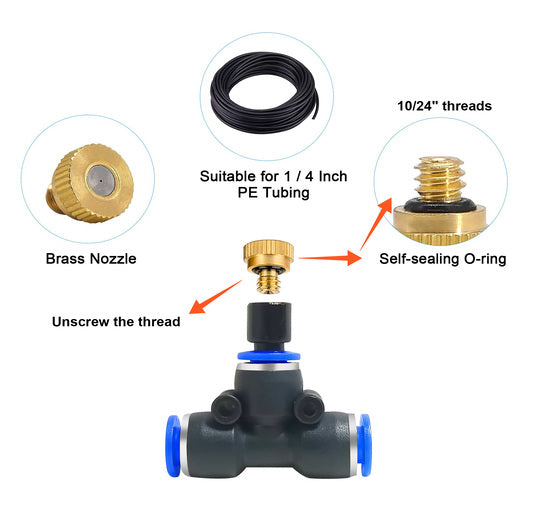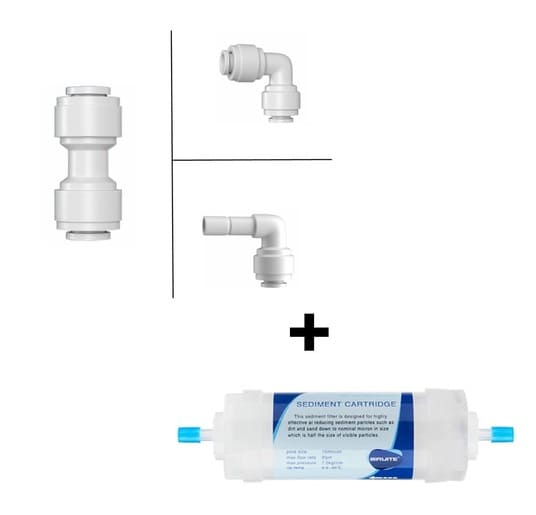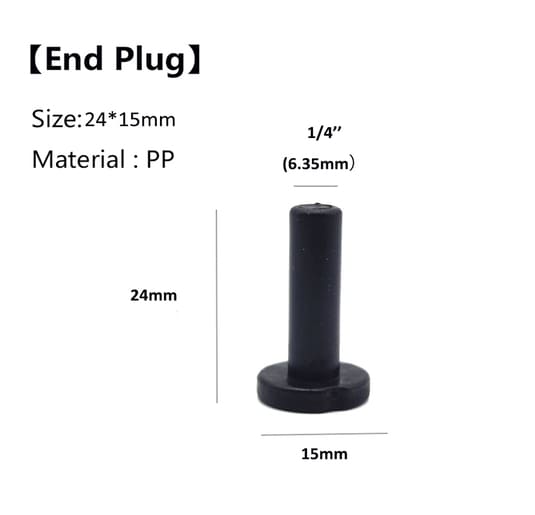The 35-foot double-loop misting fan hose is a versatile and highly efficient cooling solution suitable for various environments. The double-loop design ensures that water is evenly distributed along its entire 35-foot length, covering a wide area for optimal cooling effects.

It easily integrates with various types of fans, greatly enhancing their cooling potential. The fan misting kit transforms the intense heat into a gentle breeze, turning every outdoor moment into a peaceful retreat from the scorching summer. Its fine misting ability cools the hot air without excessively wetting surfaces, making it an ideal choice for outdoor gatherings, patios, or larger spaces.
35FT Double-Loop Water Misting Fan Hose

The 35FT dual-loop misting fan hose is made from durable and flexible materials. Its dual-loop design, whether due to the material or the design, maximizes the coverage area, effectively transforming outdoor spaces into comfortable resting areas. The hose sprayer attachment is compatible with most standard misting fans, enhancing its cooling potential. I will now analyze and compare these aspects.
Coverage Area:
With the double-loop hose, you can achieve more efficient cooling over a larger area compared to standard hoses of similar lengths. The enhanced coverage is ideal for larger outdoor spaces, patios, or areas that require consistent misting.
Versatility:
This product offers superior adaptability for different outdoor settings such as patios, parties, and large areas, thanks to its longer reach and even distribution, while typical misting hoses may be better suited for smaller spaces due to limited coverage.
Integration with Fans:
The 35FT Double-Loop Misting Hose is specifically designed to integrate easily with various types of fans. This compatibility maximizes the cooling effect by combining air circulation with fine misting, whereas standard misting hoses might not offer the same level of compatibility or ease of attachment to fans.
What Size is Better for Low Pressure Misting System

For a low-pressure misting system, the ideal nozzle size typically ranges between 0.006 to 0.012 inches (0.15 to 0.4 mm) in orifice diameter. it’s important to note that low-pressure misting primarily relies on the water pressure from the faucet to produce fine mist, and since faucet pressure isn’t a constant value, it can fluctuate frequently. Therefore, I recommend having backup sizes when purchasing to accommodate these variations.
Smaller Nozzle Sizes (0.006 to 0.008 inches / 0.15 to 0.3 mm)
Larger Nozzle Sizes (0.009 to 0.012 inches / 0.23 to 0.5 mm):
For most household or patio applications, a 0.008 to 0.010 inch (0.2 to 0.5 mm) nozzle works well, balancing between water efficiency and cooling performance. This range ensures you get fine misting without excessive water droplets.



